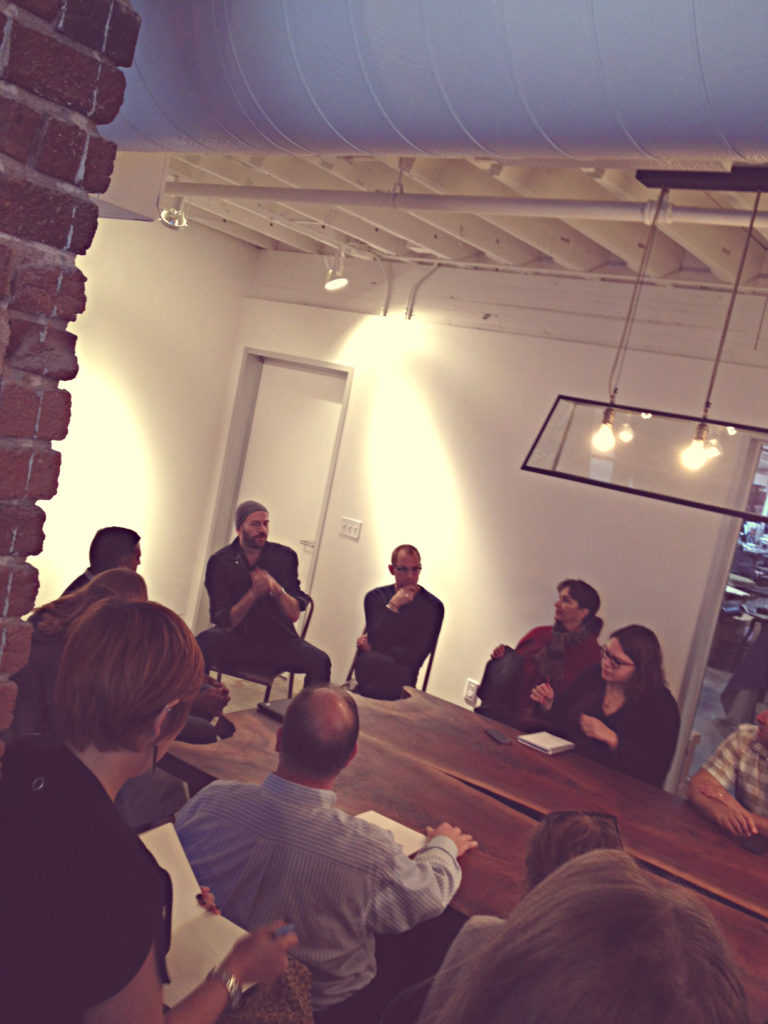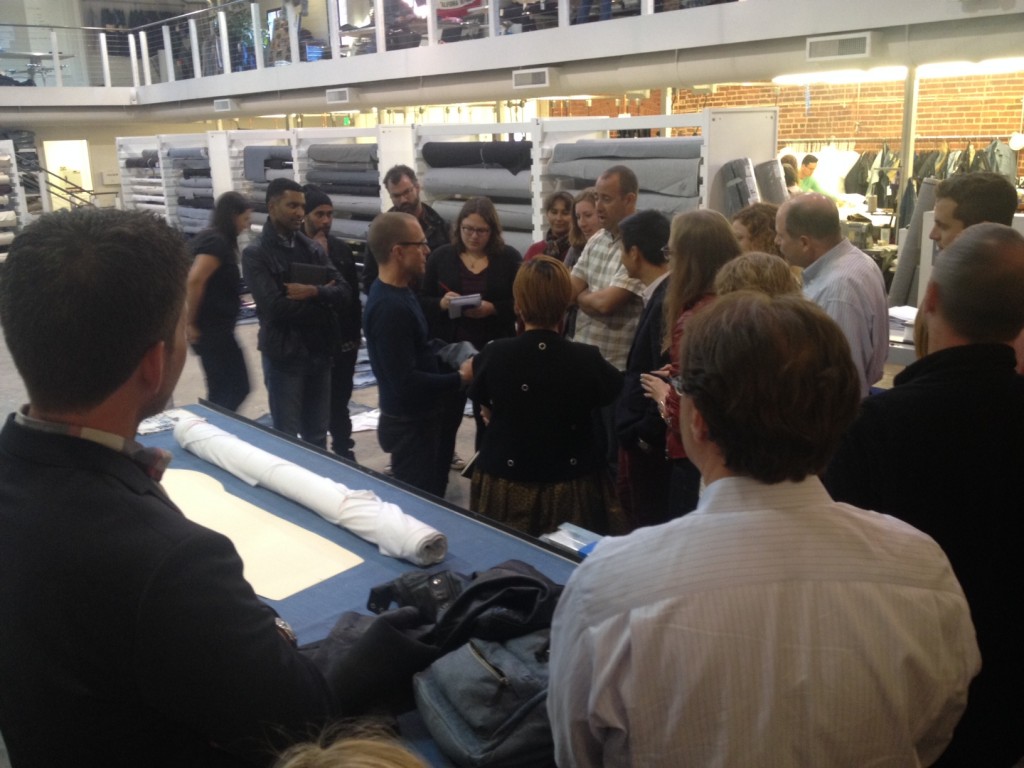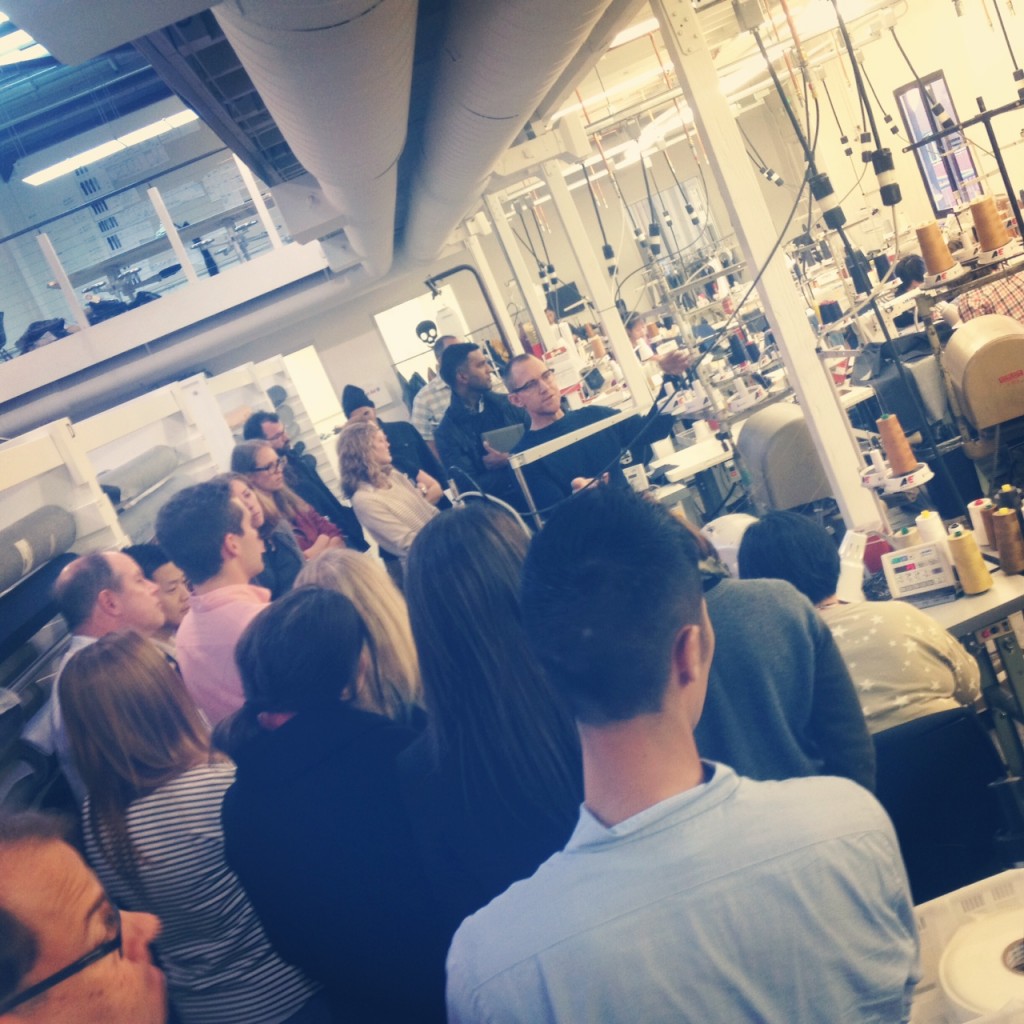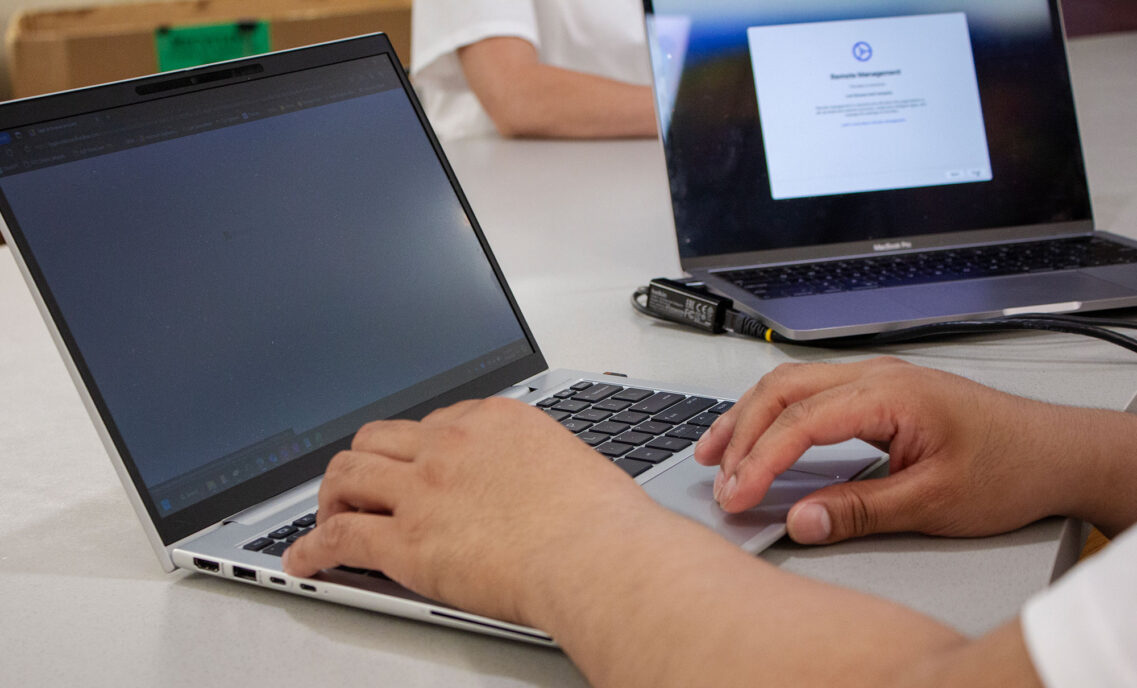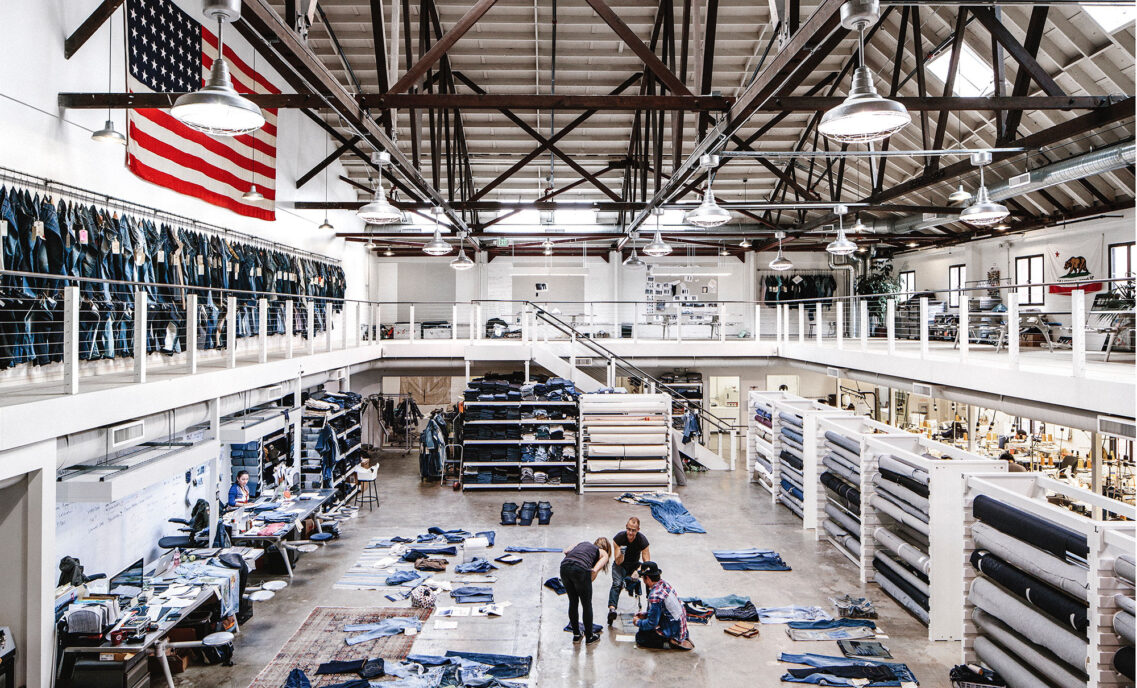The phrase “innovation lab” may conjure up thoughts of futuristic gadgets and other mind-bending tech wizardry. However, as a group who visited our Eureka Innovation Lab this week learned, our secret sauce for innovation requires many more ingredients.
Paul Dillinger our vice president of global product innovation and Bart Sights, senior director of global development, hosted attendees of Fast Company’s Innovation Uncensored conference this week at our innovation lab. The group got a behind-the-scenes look at how we’re using the lab to redefine denim and invent new, more sustainable ways to create our iconic garments.
As the group quickly learned, innovation at Levi Strauss & Co. is as much about pushing the boundaries of science and technology as it is about creating an open environment where cross-functional teams, as well as vendors, come together to test ideas, discuss, create and learn.
The innovation lab offers a small-factory environment where Bart and his team create the garments our designers dream up — from our iconic 501® jeans and trucker jackets to t-shirts and khakis. The goal is to be able to test designs at a small scale, learn quickly, make improvements and rapidly incorporate these changes into broader production globally.
Event attendees had the opportunity to see the lab in action by exploring the various steps involved in designing and developing prototypes — from printing fabric to sewing and finishing garments to testing their quality.
Along the way, Paul and Bart explained how the Eureka lab not only influences the products we make by speeding innovation, but also sets the stage for more holistic process changes that will be applied across the company and eventually the industry.
The two also spoke about how the space gives designers and vendors greater respect for the community of makers responsible for creating garments, and explained why that’s a critical for creating more thoughtful designs and processes.
“We’re trying to change communication and education around how our process works and create connections to garments and the people who make them,” Paul said. “That connection doesn’t always happen when designs are created on computers — it comes when people touch, feel, and interact with garments. That’s what we do here.”
Want to see the lab for yourself? Check out this video from Fortune magazine:
Feature image credit: Opensource.com via Flickr CC




